
by admin | May 23, 2025 | Physical Violence
Despite the progress humanity has made in science, technology, and education, one of the darkest and most enduring problems continues to persist across cultures and borders — physical violence against women.
Every day, in homes, streets, and workplaces, women face violence not because of anything they’ve done — but simply because they are women. This is not just a women’s issue; it is a human rights crisis that demands our collective attention and action.
What Is Physical Violence Against Women?
Physical violence includes any act that causes bodily harm or physical pain. It ranges from slapping, hitting, kicking, and choking, to the use of weapons. It also includes more subtle forms of abuse like restraining movement, forcefully grabbing, or pushing — often minimized by perpetrators and society alike.
But make no mistake: violence is violence, no matter the scale.
The Alarming Reality
-
According to the World Health Organization, 1 in 3 women globally experience physical or sexual violence in their lifetime.
-
In many societies, women face violence from someone they know — often from an intimate partner or family member.
-
A large number of cases go unreported, as women fear stigma, retaliation, or being blamed.
Behind every statistic is a woman whose life is impacted — mentally, emotionally, and physically.
The Cost of Silence
When physical violence is tolerated, excused, or ignored, we don’t just fail individual women — we fail entire communities. The effects are far-reaching:
-
Mental Health Issues: Anxiety, depression, PTSD, and suicidal thoughts are common outcomes.
-
Broken Families: Children growing up in violent homes are deeply affected, often perpetuating a cycle of abuse.
-
Economic Impact: Survivors may lose jobs or drop out of education due to physical injuries or trauma.
The Cultural and Structural Enablers
Too often, violence is fueled by toxic cultural beliefs:
These mindsets, combined with weak legal protections, poor law enforcement, and lack of safe reporting channels, make it difficult for women to seek justice.
Our Role in Ending Physical Violence
We all have a role to play. Ending violence against women isn’t just about punishing perpetrators — it’s about changing mindsets, institutions, and everyday behaviors.
What Can You Do?
Speak Up: Challenge jokes, comments, or traditions that normalize violence.
Educate Others: Raise awareness in your community, school, or workplace.
Support Survivors: Listen, believe, and stand by women who come forward.
Advocate for Laws: Push for stronger legislation and better implementation to protect victims and punish abusers.
Raise Boys to Respect Women: Teach empathy, equality, and responsibility from a young age.
The Hope Ahead
The journey is long, but not hopeless. From grassroots movements to international campaigns, the world is waking up. Women are raising their voices. Men are becoming allies. And communities are starting to say: enough is enough.
But awareness is only the beginning. What we need is action — from individuals, institutions, and governments.
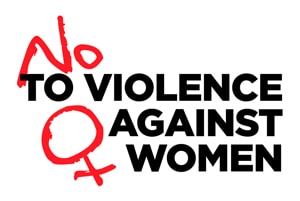
by admin | May 12, 2025 | Uncategorized
Violence against women is not just a private tragedy—it is a public emergency that threatens the very fabric of our society. It is a silent epidemic, deeply rooted in power imbalances, cultural silences, and systemic neglect. In such a world, organizations like White Ribbon Pakistan are not just important—they are essential.
As someone who has worked alongside White Ribbon in campaigns, awareness programs, and digital outreach, I’ve come to understand the transformational power of advocacy, education, and community engagement. White Ribbon Pakistan is more than a campaign—it is a movement to end gender-based violence by challenging harmful norms and reshaping societal values.
The Mission: Ending Violence through Education and Engagement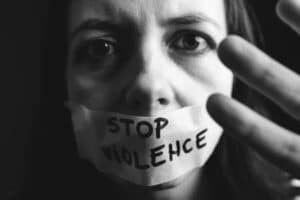
White Ribbon Pakistan is part of the global White Ribbon movement—the largest in the world working to end violence against women by engaging men and boys. What makes this initiative powerful is its proactive, preventative approach.
Unlike reactive efforts that only respond after harm is done, White Ribbon focuses on root causes:
Through school programs, corporate engagement, and social media activism, White Ribbon creates safe spaces for dialogue, learning, and action.
🕊️ “We don’t need more silence. We need brave voices that say: this must stop.”
Digital Campaigns for Change
In our tech-driven world, awareness must evolve. As part of our digital activism efforts, I’ve contributed to campaigns that educate, engage, and empower using digital tools:
-
Designing interactive awareness content
-
Using storytelling and testimonials to amplify survivor voices
-
Collaborating with ethical brands like ECS to promote women’s empowerment through fashion and visibility
-
Integrating White Ribbon messaging in corporate communication and youth platforms
These campaigns didn’t just trend—they triggered conversations, especially among young men, about respect, consent, and responsibility.
Partnering with Institutions: Building a Culture of Respect
One key strategy is working with institutions—schools, colleges, media houses, and companies—to spread the White Ribbon message. With training sessions, seminars, and tailored communication toolkits, White Ribbon helps shape environments where:
-
Women feel safe and respected
-
Men are allies, not bystanders
-
Bystander intervention is encouraged
-
Reporting mechanisms are trusted
This systemic change cannot happen overnight—but every conversation moves us forward.
📢 “Change starts when silence ends. And silence ends with awareness.”
Tech-Enabled Advocacy: Beyond Social Media
In one of my projects, I explored the idea of building digital platforms—like mobile apps and interactive websites—to help women:
These tools could become lifelines for those trapped in cycles of abuse. When tech meets compassion, real empowerment happens.
The Numbers Demand Urgency
According to UN Women, 1 in 3 women globally experience physical or sexual violence in their lifetime. In Pakistan, cases often go unreported due to fear, stigma, or lack of access to justice.
White Ribbon Pakistan responds with action, not despair. From marking International Day for the Elimination of Violence Against Women (25th November) to initiating 16 Days of Activism, the organization remains committed to changing not just laws, but hearts and minds.
Moving Forward: What You Can Do
Whether you are a student, teacher, parent, or simply someone who cares—you are part of the solution.
-
Speak up against sexist jokes and comments.
-
Support survivors by believing and listening to them.
-
Volunteer with campaigns like White Ribbon Pakistan.
-
Educate yourself and others about the subtle forms of emotional, verbal, and psychological abuse.
-
Raise your sons to value empathy, respect, and equality.
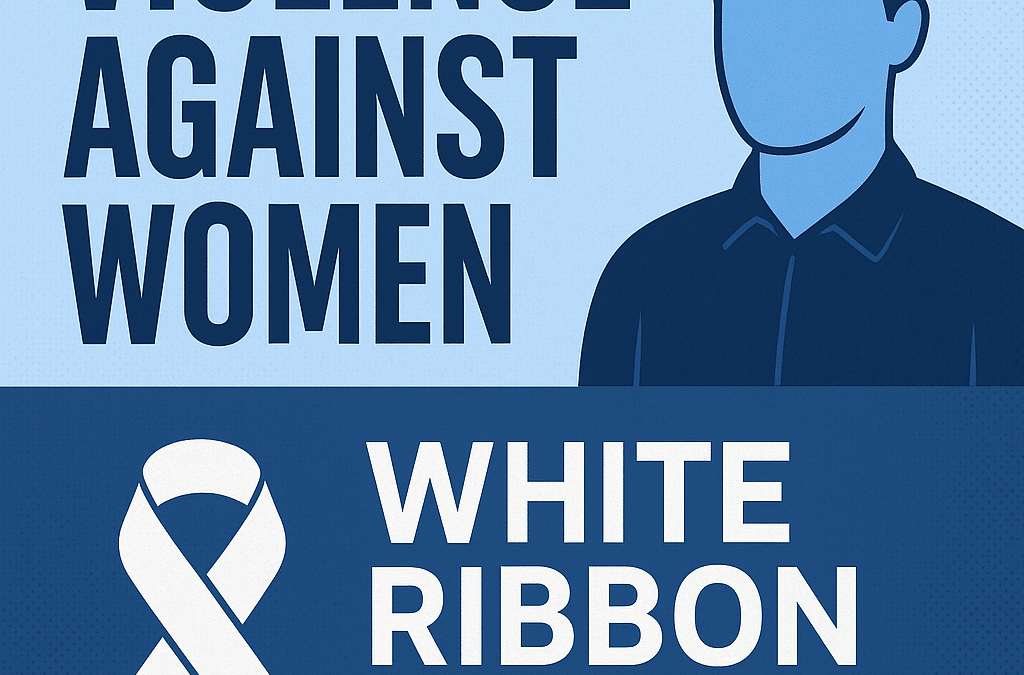
by admin | May 5, 2025 | Uncategorized
Violence against women is not a women’s issue — it’s a human issue, and more importantly, it’s a men’s issue too. In societies around the world, including Pakistan, women face discrimination, abuse, and violence in various forms. For decades, these injustices were met with silence. But that silence is being broken — and men are beginning to take a stand.
One of the most powerful movements in Pakistan addressing this issue is the White Ribbon Campaign — a movement where men speak out against violence towards women and commit to becoming part of the solution, not the problem.
Why Should Men Be Involved?
Men are often the perpetrators of gender-based violence, but they are also key to ending it. Men have power — in homes, workplaces, religious spaces, and communities. If they use that power to protect, uplift, and support women rather than control or silence them, change becomes possible and sustainable.
Men’s involvement is not about guilt — it’s about responsibility. It’s about standing against a culture that normalizes harassment, emotional abuse, or silence in the face of domestic violence.
The White Ribbon Movement in Pakistan
The White Ribbon Pakistan campaign is a national movement that invites men and boys to wear a white ribbon as a sign of their commitment to ending violence against women. It promotes:
-
Awareness through education
-
Engagement through community events and workshops
-
Advocacy for policy change
-
Support for women’s rights organizations
White Ribbon Pakistan isn’t just about symbolism — it’s about action. It challenges toxic masculinity, promotes respectful behavior, and urges men to intervene when they witness violence or injustice.
Key Messages of the Campaign
-
Violence is never a solution.
-
Respect begins at home.
-
Men must speak up — silence is complicity.
-
Educating boys is as important as protecting girls.
-
Change starts with everyday actions.
How Men Can Help End Violence
Every man can play a part — here’s how:
1. Challenge Harmful Norms
Speak out against sexist jokes, objectification of women, and outdated beliefs that feed a culture of violence.
2. Raise Boys Differently
Teach young boys empathy, respect, and the value of equality from an early age. Replace the idea of “boys don’t cry” with healthy emotional intelligence.
3. Support Survivors
Listen, believe, and support women who speak out. Stand by them without judgment or victim-blaming.
4. Be Accountable
Reflect on personal behavior. Apologize and change when mistakes are made. Leadership begins with honesty.
5. Join the Movement
Wear the white ribbon. Join campaigns. Share the message on social media. Be vocal in your community, workplace, or school.
A Better Society for All
When men stand against violence, women are safer, children are healthier, and society thrives. This is not just about protecting women — it’s about building a fair, just, and humane society for everyone.
In Pakistan, the White Ribbon Movement has shown that change is possible — and that men are not the enemy, but the allies women need.
Let us not wait for tragedy to inspire change. Let us act today — because ending violence against women starts with men.
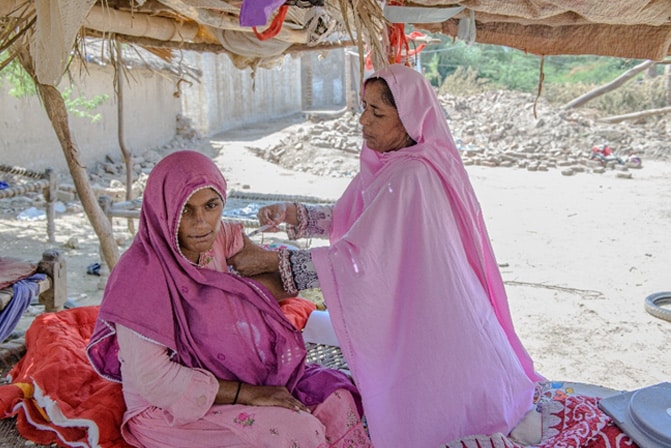
by admin | Apr 30, 2025 | Uncategorized
Women’s health in Pakistan, especially in its remote and underdeveloped regions, faces a myriad of challenges. These challenges stem from socio-economic factors, cultural norms, and the lack of infrastructure and awareness. For many women living in the backward areas of the country, access to quality healthcare is limited, leading to significant health disparities. In this blog, we will explore the critical issues affecting women’s health in these regions, the existing barriers, and potential solutions to improve the situation.
1. Limited Access to Healthcare Services
One of the most significant challenges women in backward areas face is the lack of access to healthcare facilities. In many rural regions of Pakistan, health clinics and hospitals are few and far between. Traveling to the nearest healthcare center can be costly and time-consuming, particularly in areas where roads are poor or non-existent.
Moreover, the few available health facilities are often underfunded, under-equipped, and short-staffed. These hospitals and clinics may lack essential medical supplies, diagnostic equipment, or specialized medical professionals, such as gynecologists and obstetricians, which is crucial for women’s health, especially during pregnancy and childbirth.
2. Cultural and Societal Barriers
Cultural norms in many backward areas of Pakistan heavily influence women’s healthcare decisions. There is often a stigma surrounding women’s health issues, particularly reproductive health. Topics like menstruation, contraception, and maternal health are frequently considered taboo and are not openly discussed within families or communities. This silence prevents many women from seeking the necessary medical attention when needed.
Furthermore, gender inequality in some areas also means that women do not have the autonomy to make decisions regarding their own health. Male members of the family often have the final say on healthcare matters, and this can result in women’s health needs being neglected.
3. Maternal Health and High Mortality Rates
Pakistan has one of the highest maternal mortality rates in South Asia. In rural areas, the situation is even more dire due to limited access to prenatal care, skilled birth attendants, and postnatal care. Many women give birth at home, often with the assistance of untrained midwives or no help at all. This increases the risk of complications during childbirth, such as hemorrhage, infection, and eclampsia, which can be fatal without timely medical intervention.
In these areas, maternal health education is also scarce, and many women are unaware of the importance of antenatal check-ups or the warning signs of complications. This lack of knowledge can lead to preventable deaths and long-term health issues for both mothers and their babies.
4. Nutritional Deficiencies
Nutrition plays a crucial role in a woman’s overall health, particularly in pregnancy. Malnutrition is widespread in many underdeveloped regions of Pakistan, where food insecurity is common. Women, especially in rural areas, often lack access to a balanced diet, which contributes to anemia, vitamin deficiencies, and other health complications. Pregnant women are especially vulnerable to these conditions, which can negatively affect the development of their babies.
Additionally, cultural practices sometimes limit women’s access to adequate nutrition. In some families, men eat first, and women are left with the leftovers, which may not be sufficient or nutritious.
5. Mental Health and Psychological Well-being
Mental health is another area that is often overlooked in backward areas. Women in these regions experience high levels of stress, anxiety, and depression due to various factors, such as poverty, domestic violence, and limited social support. However, mental health issues are often stigmatized, and seeking help is viewed as a sign of weakness or a luxury that rural women cannot afford.
The lack of awareness around mental health and the absence of professional counselors or psychologists in these areas make it difficult for women to receive the care they need. This neglect of mental health contributes to a cycle of physical and emotional suffering that affects women’s quality of life.
6. The Role of Government and NGOs
The government of Pakistan, along with various non-governmental organizations (NGOs), has initiated several programs aimed at improving women’s health in remote areas. These programs often focus on raising awareness about maternal and child health, providing vaccinations, and offering free or subsidized medical services. However, these initiatives face many challenges, including lack of funding, political instability, and logistical issues.
Local NGOs, such as the Rural Support Programmes, have made significant strides in improving women’s access to healthcare through mobile clinics, health education, and the provision of essential health services. However, their reach is still limited, and many women in the most remote areas remain unreachable.
7. Potential Solutions
To improve the health outcomes for women in backward areas, it is essential to adopt a multifaceted approach that involves both the government and civil society. Some of the key solutions include:
-
Improved Healthcare Infrastructure: The government should invest in building more healthcare facilities in rural areas, ensuring that these clinics are well-equipped, staffed, and accessible to women.
-
Community Health Workers: Training local women as community health workers could help bridge the gap in healthcare access. These workers can provide basic medical care, health education, and support to women in their communities.
-
Health Education Campaigns: It is essential to launch widespread awareness campaigns focusing on maternal health, nutrition, and mental health. These campaigns should target both men and women to break down the cultural barriers surrounding women’s health.
-
Mobile Health Clinics: Mobile health services can reach women in the most remote areas. These clinics can provide regular check-ups, vaccinations, and maternal care, reducing the need for long-distance travel to healthcare centers.
-
Increased Funding and Support: Both the government and NGOs should increase funding for women’s health programs, particularly in rural areas, to ensure that these programs are sustainable and reach the most vulnerable populations.
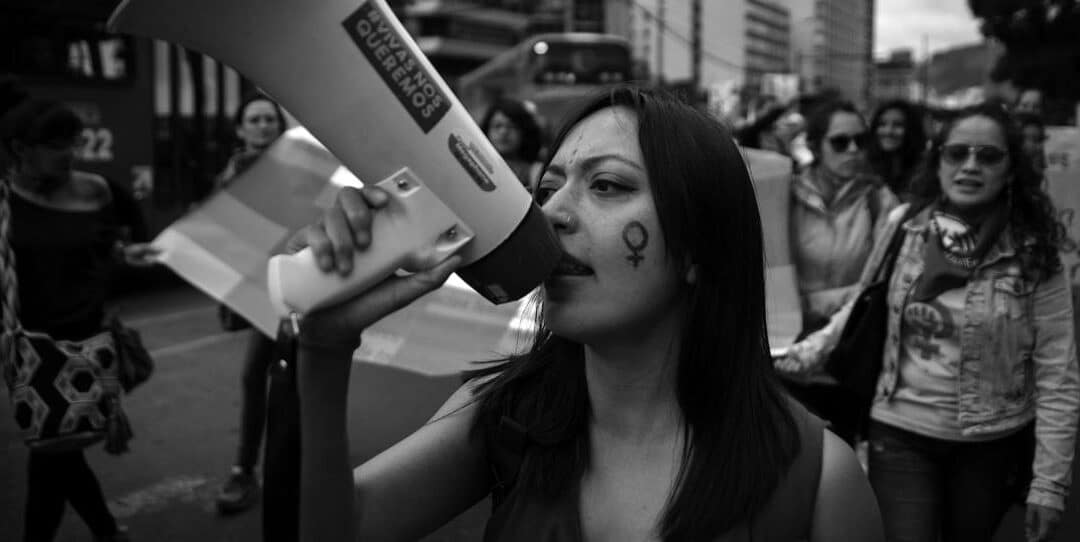
by admin | Apr 23, 2025 | Uncategorized
Violence against women is not just a personal issue—it’s a deep-rooted social crisis that transcends borders, cultures, and communities. From the streets to homes, workplaces to institutions, women continue to face various forms of violence—physical, emotional, economic, and digital. Despite progress in awareness, the numbers remain alarming. But beyond statistics lies the real cost: the lives disrupted, voices silenced, and generations affected.
At the heart of this issue lies a fundamental inequality—a mindset that still views women as less. We must understand that this is not about isolated incidents, but about systems and beliefs that allow such behavior to exist and thrive.
But here’s the truth: change is possible, and it begins with awareness, support, empowerment, and collective action.
Breaking Barriers with Awareness and Education
Much like the way entrepreneurs challenge the status quo to build something meaningful, we need to challenge outdated cultural and societal norms that normalize gender-based violence. Awareness campaigns, school programs, community engagement, and accessible education are key drivers of this change. Organizations like Pink Ribbon Pakistan are already paving the way, not just in breast cancer awareness but in giving women a voice and a platform.
Empowering women with knowledge is not just preventative—it’s transformative. A society that educates both women and men about rights, respect, and responsibility can shift narratives and behaviors.
Leadership Means Protection, Not Power
A powerful leader is not the one who dominates, but the one who protects, uplifts, and inspires. Leaders—be it in homes, businesses, or governments—have a moral obligation to foster environments where every woman feels safe and valued.
Imagine a workplace where women are not just hired but heard. Where policies are built around safety, equality, and dignity. Where leadership leads by example—not with silence, but with action.
Entrepreneurship & Empowerment: A Pathway to Strength
Empowering women economically is one of the strongest tools against violence. Women who are financially independent are more likely to escape abusive situations and stand up for their rights. Encouraging women entrepreneurs, supporting small businesses led by women, and celebrating their success stories are essential in reshaping societal perceptions.
Women empowerment doesn’t end with opportunity—it begins with it.
From Advocacy to Action
It’s time to move beyond just talking about violence against women. Real impact lies in collective action. Support local women’s shelters, donate to organizations like Pink Ribbon and White Ribbon Pakistan, lobby for stricter laws, hold institutions accountable, and most importantly, listen to survivors. Believe them. Support them.
Social media, blogs, and storytelling are powerful tools. Use your voice. Share stories. Break the silence.
The Future is Equal—and It’s Ours to Build
Violence against women is not inevitable. It’s preventable. By shifting mindsets, strengthening laws, promoting equality, and educating the next generation, we can create a world where every woman is free to live without fear.
Let us not wait for change. Let us be the change.
Together, we can build a society where women are safe, strong, respected—and empowered.
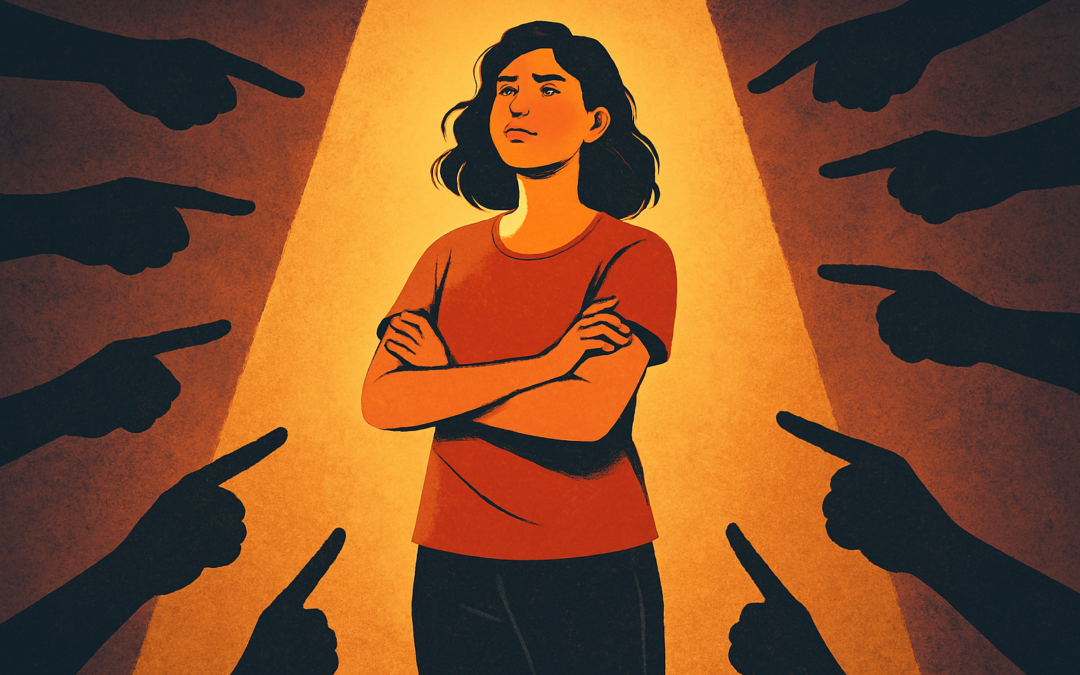
by admin | Apr 14, 2025 | Uncategorized
When a woman finds the courage to speak up about abuse, harassment, or violence, the response she receives from society can be just as harmful as the trauma itself. Rather than being met with support, empathy, and justice, too often she is questioned, doubted, and even blamed for what happened to her. This phenomenon is known as victim blaming, and it is a deeply rooted societal issue that perpetuates silence, injustice, and inequality.
What is Victim Blaming?
Victim blaming occurs when the victim of a crime or harmful act is held responsible, wholly or partially, for what happened to them. In the case of gender-based violence, this often means suggesting that a woman’s clothing, behavior, location, or past actions somehow provoked or justified the abuse.
For example:
-
“Why was she out so late?”
-
“She shouldn’t have worn that.”
-
“She probably led him on.”
-
“She must be exaggerating.”
These comments shift the focus from the perpetrator’s actions to the victim’s supposed “mistakes.” They reflect a dangerous mindset that undermines justice and reinforces a culture of silence and fear.
The Impact on Women
The consequences of victim blaming are profound. When women are blamed for the violence they endure:
-
They are less likely to report the abuse.
-
They may experience shame, guilt, and isolation.
-
Their mental and emotional healing is hindered.
-
The perpetrators are emboldened and unaccountable.
In effect, society tells women that their safety is their responsibility alone—and if something happens, they are at fault.
Why Does Victim Blaming Happen?
Victim blaming stems from a complex mix of cultural, psychological, and social factors. Some of these include:
-
Patriarchal values that place women in a subordinate position.
-
Myths about rape and violence, such as “men can’t control themselves.”
-
Denial as a defense mechanism: If we believe victims are to blame, we feel safer, thinking it couldn’t happen to us.
-
Lack of education about consent, gender equality, and the realities of abuse.
Changing the Narrative
We must shift the narrative from “What was she doing?” to “Why did he do that?” From “Why didn’t she leave?” to “Why did he abuse her?” Change begins with awareness, and here are steps we can all take:
-
Believe survivors without judgment.
-
Challenge victim-blaming language in everyday conversations.
-
Support education on gender equality and consent.
-
Hold perpetrators accountable, not victims.
-
Empower women to speak up by creating safe, supportive environments.
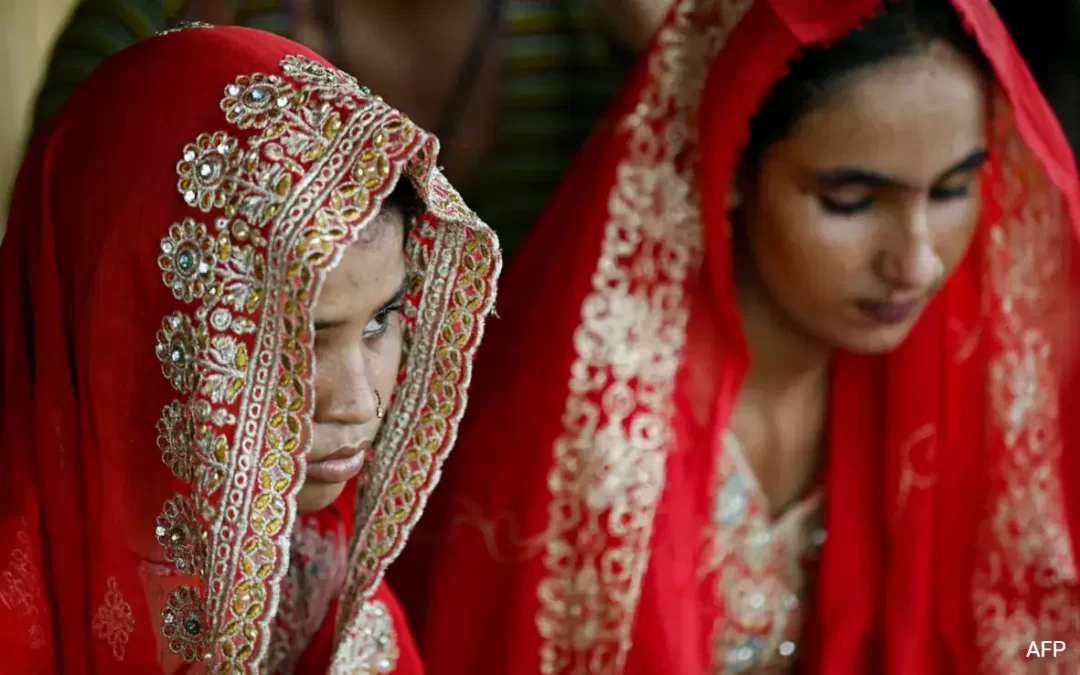
by admin | Apr 3, 2025 | Uncategorized
Child marriage remains a pressing issue in many parts of the world, with devastating consequences for young girls who are forced into early unions. While it is often justified by cultural, economic, or social factors, child marriage is a form of gender-based violence that significantly increases the risk of domestic abuse, emotional trauma, and lifelong disadvantage.
The Reality of Child Marriage
According to UNICEF, an estimated 12 million girls are married before the age of 18 every year. In some cases, these marriages are arranged due to poverty, where families believe marrying their daughters off early will relieve financial burdens. Other times, it is driven by traditions that dictate that girls must marry young to uphold family honor.
However, these child brides are often denied education, independence, and a choice in their own future. They enter marriage without full knowledge of their rights, making them more vulnerable to abuse.
How Child Marriage Leads to Domestic Abuse
1. Unequal Power Dynamics
When a young girl is married to an older man, there is an inherent power imbalance. The husband, often much older and more experienced, holds control over finances, decision-making, and household rules. This dynamic makes the child bride dependent and powerless, unable to resist demands or seek help.
2. Increased Risk of Physical and Emotional Abuse
Studies have shown that child brides are at a much higher risk of domestic violence. Many face physical, sexual, and emotional abuse at the hands of their husbands or in-laws. They are often expected to obey without question, and any resistance may result in beatings, marital rape, or psychological torment.
3. Limited Legal Protection
In countries where child marriage is still practiced, legal protections for young brides are weak or nonexistent. Many girls do not even realize that they have rights or that what they are experiencing is abuse. In some cases, authorities may not take their complaints seriously, leaving them trapped in abusive marriages.
4. Lack of Education and Economic Dependence
Child marriage frequently results in girls dropping out of school, limiting their opportunities for self-sufficiency. Without education or job prospects, they become completely financially dependent on their husbands, making it even harder for them to escape abusive situations.
5. Early Pregnancy and Health Risks
Many child brides are forced into early pregnancies, which carry severe health risks. Their bodies are often not ready for childbirth, leading to complications such as maternal mortality, stillbirths, or obstetric fistula. In abusive marriages, these young mothers also face the added burden of caring for children while enduring violence.
The Psychological Toll on Child Brides
The trauma of child marriage and domestic abuse extends beyond the physical. Many survivors struggle with severe depression, anxiety, and post-traumatic stress disorder (PTSD). The constant fear, isolation, and lack of freedom take a toll on their mental well-being, often leading to suicidal thoughts or self-harm.
What Can Be Done to Stop Child Marriage and Domestic Abuse?
1. Strengthening Laws and Policies
Governments must enforce strict laws banning child marriage and ensure that violators face legal consequences. Minimum marriage age laws must be upheld, with no exceptions based on parental consent or religious traditions.
2. Empowering Girls Through Education
Education is one of the most powerful tools to combat child marriage. When girls stay in school, they are more likely to delay marriage and gain the skills needed to become financially independent.
3. Providing Safe Spaces and Support
Communities and NGOs must provide shelters, legal assistance, and counseling for girls escaping child marriages. Many victims have nowhere to turn, so having safe spaces where they can seek help is crucial.
4. Changing Cultural Norms and Awareness
Efforts must be made to challenge cultural traditions that normalize child marriage. Through awareness campaigns, community discussions, and education, societies can gradually shift toward valuing girls’ rights and futures.
5. Engaging Men and Boys
Men and boys play a vital role in ending child marriage. By educating young men about gender equality and healthy relationships, we can reduce the likelihood of them becoming perpetrators of abuse. Fathers and brothers can also act as allies by refusing to support forced marriages within their families.

by admin | Mar 19, 2025 | Uncategorized
Workplace harassment is a serious issue that affects employees across industries, leading to emotional distress, career setbacks, and toxic work environments. Many victims suffer in silence, either out of fear of retaliation or lack of awareness about their rights. Recognizing workplace harassment and knowing how to fight back is essential for creating safe, respectful, and productive workplaces.
Understanding Workplace Harassment
Workplace harassment is any unwanted behavior that creates a hostile or intimidating environment. It can be verbal, physical, psychological, or digital. The most common forms include:
- Sexual Harassment – Unwanted sexual advances, inappropriate comments, or requests for sexual favors.
- Verbal Harassment – Insults, slurs, or offensive jokes targeted at someone’s gender, race, religion, or background.
- Physical Harassment – Unwanted touching, intimidation, or physical violence.
- Psychological Harassment – Gaslighting, threats, or emotional manipulation.
- Cyber Harassment – Offensive emails, text messages, or social media threats from colleagues or superiors.
Harassment can come from anyone in the workplace—a boss, a coworker, a client, or even a subordinate. It often goes unreported due to fear of losing a job, damaging one’s reputation, or lack of confidence in the reporting system.
How to Recognize Workplace Harassment
Many victims fail to recognize harassment because they normalize inappropriate behavior. Here are key signs:
- You feel unsafe, uncomfortable, or disrespected due to someone’s behavior.
- You are constantly belittled, insulted, or humiliated.
- You face unwanted advances or inappropriate jokes about your gender, race, or identity.
- You are pressured into actions that violate your personal boundaries.
- Your work is sabotaged, or you are unfairly treated due to personal bias.
If any of these situations sound familiar, you may be experiencing workplace harassment.
How to Fight Back Against Workplace Harassment
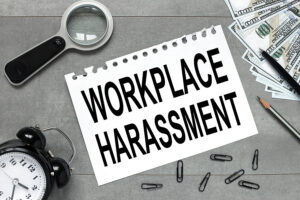
1. Document Everything
Keep a record of all incidents, including dates, times, locations, people involved, and any witnesses. Save emails, messages, and any other evidence that supports your case.
2. Speak Up Immediately
If you feel safe, confront the harasser directly. A firm response like, “I find your behavior inappropriate, and I want it to stop,” can sometimes deter further harassment.
3. Report to HR or Management
Most workplaces have anti-harassment policies. Follow the official procedure for reporting harassment. If your company lacks proper policies, escalate the complaint to senior management or external legal bodies.
4. Know Your Rights
Many countries have strict laws against workplace harassment. Familiarize yourself with labor laws in your region and seek legal advice if needed.
5. Seek Support
Do not suffer in silence. Talk to a trusted colleague, mentor, or counselor. Support groups and employee unions can also provide guidance.
6. Take Legal Action if Necessary
If internal complaints are ignored, consider taking legal steps. Many organizations and human rights commissions offer free legal aid to workplace harassment victims.
Creating a Harassment-Free Workplace
Fighting workplace harassment is not just the victim’s responsibility—everyone plays a role. Organizations must:
- Implement strict anti-harassment policies and ensure all employees are aware of them.
- Train employees and managers on recognizing and preventing harassment.
- Encourage a culture of respect where employees feel safe to report concerns.
- Take swift action against offenders to set a precedent for zero tolerance.
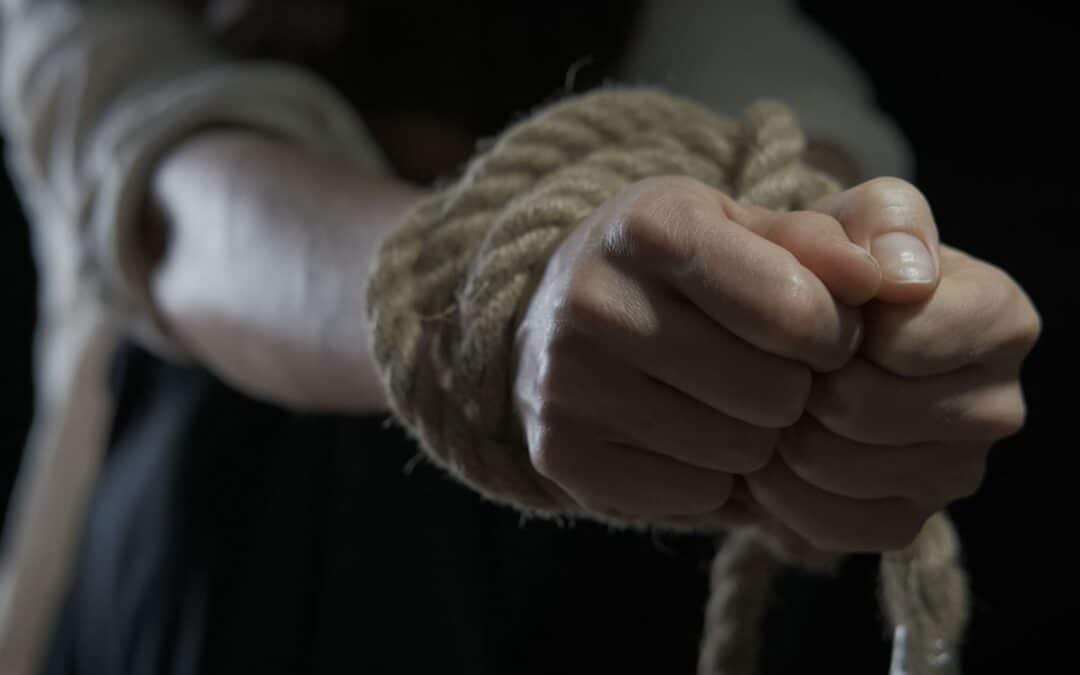
by admin | Feb 27, 2025 | Uncategorized
Violence against women is a deeply entrenched social issue that affects millions worldwide. Despite global efforts to combat it, the cycle of violence persists, trapping victims in a repetitive and destructive pattern. Understanding this cycle is crucial in breaking it and fostering a society that upholds women’s rights and safety.
Understanding the Cycle of Violence
The cycle of violence against women, first conceptualized by psychologist Dr. Lenore Walker, consists of three recurring phases:
- Tension-Building Phase
This phase is marked by rising tensions in a relationship. The abuser may become increasingly irritable, controlling, or verbally abusive. The victim often tries to appease the abuser to prevent escalation, leading to a sense of walking on eggshells.
- Acute Explosion Phase
This is the stage where the actual violence occurs. It can take various forms, including physical, emotional, sexual, or psychological abuse. The abuser exerts power and control over the victim, often leaving them physically harmed and emotionally shattered.
- Honeymoon Phase
After the outburst, the abuser may express remorse, offer apologies, and make promises to change. They may shower the victim with affection and gifts, creating a false sense of security. However, without genuine efforts to change, the cycle repeats, often with increased severity.
The Impact of the Cycle
The repetition of this cycle has profound effects on the victim. Over time, women caught in abusive relationships may experience:
- Physical injuries ranging from bruises to life-threatening conditions.
- Psychological trauma, including anxiety, depression, and PTSD.
- Social isolation, as abusers often manipulate and control victims to cut ties with supportive friends and family.
- Economic dependence, making it difficult for victims to leave abusive relationships due to financial constraints.
Breaking the Cycle
Ending the cycle of violence requires a multi-faceted approach, involving individuals, communities, and institutions. Here’s how we can help:
- Raising Awareness
Public education campaigns can help communities recognize the signs of abuse and intervene early.
- Strengthening Legal Protections
Governments must enforce stringent laws against domestic violence and ensure that victims have access to justice and protection.
- Providing Support Services
Shelters, counseling, and financial assistance empower women to leave abusive situations and rebuild their lives.
- Encouraging Societal Change
Challenging gender norms and toxic masculinity can help create a culture where respect and equality thrive.

by admin | Feb 21, 2025 | Uncategorized
Introduction
Physical violence against women in Pakistan’s backward areas remains a pressing issue, deeply rooted in cultural and societal norms. Women in these regions face abuse in multiple forms, often at the hands of their own family members. The treatment of wives, daughters, and even mothers highlights a dire need for awareness, legal reforms, and societal change.
The Reality of Violence Against Women
In many rural and conservative areas of Pakistan, women experience violence due to outdated traditions, lack of education, and male-dominated societal structures. Domestic abuse, honor killings, forced marriages, and psychological torment are rampant, with little to no legal consequences for perpetrators.
Forms of Abuse Faced by Women
- Domestic Violence
Many women are subjected to severe beatings and abuse by their husbands, often over minor issues or financial struggles. Due to societal pressure, most victims suffer in silence.
- Honor Killings
Women accused of tarnishing the “family honor” are often killed by their own relatives. Such acts are justified by outdated beliefs and often go unpunished due to weak legal enforcement.
- Forced Marriages and Child Marriages
Girls, sometimes as young as 12, are forced into marriages against their will. These marriages often lead to lifelong suffering, abuse, and suppression of basic human rights.
- Psychological and Emotional Abuse
Women are often belittled, restricted from making their own decisions, and treated as inferior to men, leading to long-term emotional trauma.
The Role of Society and Legal System
Lack of Legal Protection
Despite laws such as the Domestic Violence (Prevention and Protection) Act, enforcement remains weak in rural areas. Many women are unaware of their legal rights, and even when cases are reported, justice is often delayed or denied.
Cultural Barriers
Traditional mindsets and patriarchal norms discourage women from speaking out. Fear of societal backlash, economic dependence, and family pressure often force victims to endure suffering rather than seek help.
The Need for Change
- Stronger Legal Enforcement
The government must ensure strict implementation of laws protecting women’s rights, along with swift punishment for offenders.
- Education and Awareness Campaigns
Raising awareness about women’s rights through education and media can help break the cycle of violence.
- Women Empowerment Initiatives
Providing women with financial independence through job opportunities and skill development programs can help them escape abusive environments.
- Community Involvement
Encouraging community leaders, religious scholars, and local influencers to condemn violence against women can help shift societal norms.














